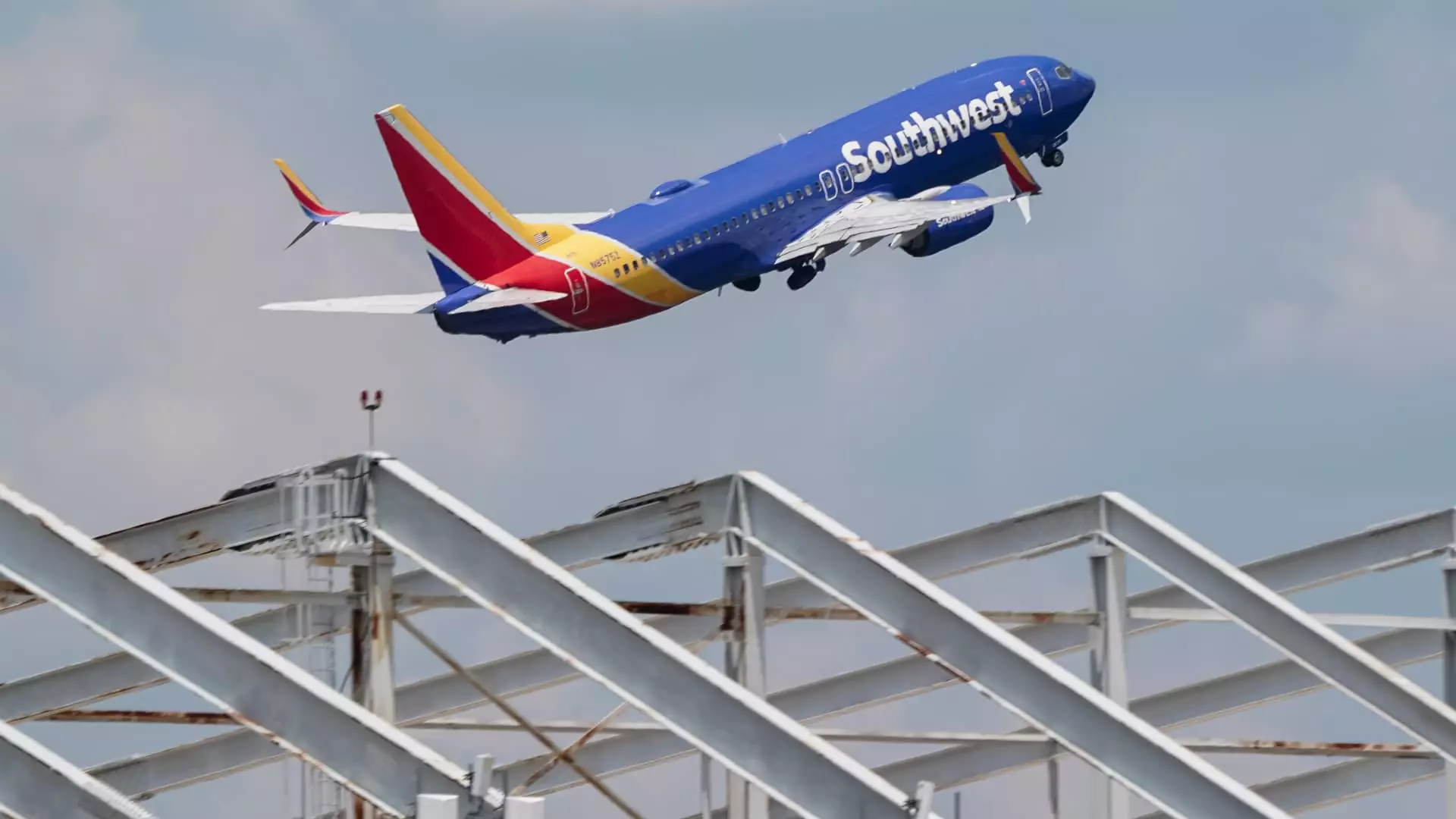Southwest Airlines is facing a complex landscape as it concludes the third quarter of the fiscal year. Although the airline’s profits declined significantly—down 65% year-over-year—the results managed to surpass Wall Street expectations, indicating a resilient response amidst challenging circumstances. The airline reported a net income of $67 million, equating to 11 cents per share. Notably, adjusted earnings demonstrated a stronger performance at 15 cents per share, which was a welcome surprise for analysts who anticipated a breakeven scenario.
A noteworthy development during this quarter was Southwest’s collaboration with activist investor Elliott Investment Management. The firms reached an agreement that not only avoided a proxy battle but also resulted in the inclusion of six of Elliott’s candidates on the company’s board. This strategic move signals a critical pivot for Southwest as it seeks to enhance governance and potentially align better with shareholder interests. CEO Bob Jordan’s retention in his role underlines a strategic continuity in leadership while allowing for fresh perspectives to join the boardroom.
Looking ahead, Southwest forecasts an optimistic increase in unit revenue between 3.5% to 5.5% for the fourth quarter, despite a 4% reduction in overall capacity. This points to the airline’s confidence in consumer demand, especially as it pertains to the holiday travel season. The company has indicated that travel bookings remain robust, a reflection of the resilience characteristic of leisure travel—a segment that has shown consistent performance even in tough economic climates.
Amid this promising outlook, one concerning factor looms: operational costs, excluding fuel, are anticipated to surge by as much as 13%. This rise in costs presents a crucial challenge for Southwest as it strives to balance profitability with competitive pricing.
In a bid to revitalize its business model, Southwest has articulated a three-year plan aimed at generating an additional $4 billion in earnings before interest and taxes by 2027. The airline’s approach includes a $2.5 billion stock repurchase initiative and the reduction of less profitable routes, particularly from Atlanta. This decision reflects a strategic recalibration focused on enhancing operational efficiency.
One of the most significant changes announced is the shift away from the airline’s longstanding open seating policy. Instead, Southwest will introduce charged seating options, including allowances for extra legroom—marking a major departure from its tradition of customer-friendly practices over the past five decades. This move may signal a transition towards a more revenue-driven model, potentially attracting both new and existing customers willing to pay for enhanced comfort and convenience.
Southwest Airlines is at a pivotal junction, grappling with declining profits while strategically aligning itself to better serve both investors and travelers. The upcoming quarters will indicate whether these changes resonate positively in a market that remains highly competitive and sensitive to fluctuations in consumer sentiment. With an optimistic revenue forecast and transformational operational strategies, the airline is setting the stage for potential growth and reinvention in the years to come.

